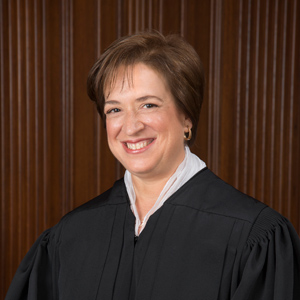Going to law school for the wrong reasons? It worked for this justice

It’s the standard advice for prospective students who are considering law school because they don’t know what to do with their lives. Don’t do it, the advice goes. Opt for a different career.
Justice Elena Kagan recalls catching herself giving similar advice when she was dean of Harvard Law School. Kagan was speaking to students who had been admitted and were considering which school to attend. Then she realized she hadn’t followed her own advice. The Supreme Court Brief (sub. req.) covered Kagan’s comments, made in Crystal City, Virginia, recently at an Equal Justice Works career fair.
“I honestly went to law school for all the wrong reasons,” Kagan told the law students. “When I was dean, there would always be these admitted-student weekends when you talk to the students who you just admitted and you’re trying to get them to come to your school.
“I was in the middle of talking to them, and I just said something like ‘Well, you shouldn’t go to law school unless you really want to go to law school. You shouldn’t go to law school because you can’t think of anything better to do or because it will keep your options open or all of these reasons that.’ … Then I sort of stopped myself in the middle, because I thought to myself, ‘I think that’s why you went to law school.’ But I was very lucky because when I got to law school, I realized right away that I loved it.”

Judge Elena Kagan.
Kagan also told the students that, when she was dean, she thought law students were too risk-averse and too focused on set plans, according to Supreme Court Brief.
“I’ve found in my life that the best opportunities are the ones that you didn’t expect,” Kagan said. “I’m a huge believer in serendipity in life and in careers and especially in legal careers, and think that what young people ought to do, and not-so-young people as well, is to just sort of keep their eyes open for opportunities. All the most fun things that I’ve done in my life, I didn’t really expect to do.”
Kagan also said the Supreme Court has worked hard to reach agreement with only eight members. Sometimes the justices were able to agree by sidestepping a larger issue, she said. In those cases, the justices agree “by essentially re-characterizing the issues in a way that it’s not really the issue that people need decided. We’ve sort of massaged the thing to make it, to decide a different question that honestly nobody really cares about, when the issue that people do care about and need decided is still left unresolved. That, too, is a problem.”
Hat tip to Bloomberg Big Law Business.



